
Success in today’s dynamic project environments is rarely the result of chance. It stems from precise planning, methodical tracking, and informed decision-making. Key Performance Indicators (KPIs) are the cornerstone of this process, transforming goals into measurable outcomes. These metrics translate abstract goals into actionable insights, giving leaders the clarity and foresight to deliver results.
When implemented strategically, KPIs align teams, optimize resource allocation, and mitigate risks. However, their real power emerges when enhanced with predictive intelligence, transforming KPIs from static measurements into dynamic s that anticipate challenges and optimize outcomes.
This article explores KPIs' importance in project management, how to craft them effectively, the role of technology, and why predictive intelligence is the next frontier for maximizing their potential.
What Are Key Performance Indicators (KPIs)?
In today’s intricate project environments, clarity is no longer optional but a strategic necessity. This is where Key Performance Indicators (KPIs) come into play, acting as the compass that guides teams toward measurable success. Legacy Key Performance Indicators (KPIs) often fail to deliver the actionable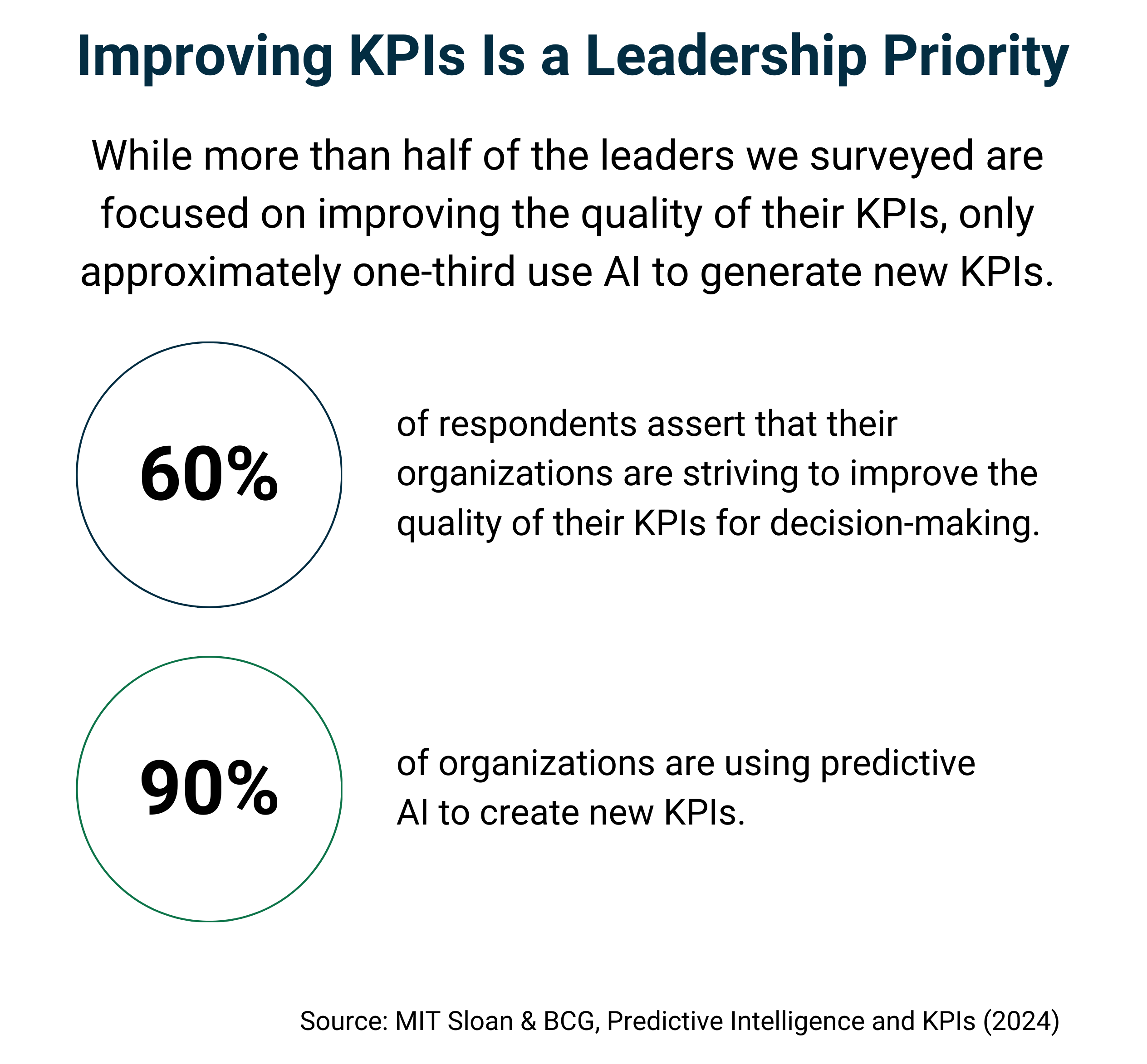 insights leaders need to navigate today’s complexities effectively. However, leveraging predictive AI-powered KPIs are strategic solutions that connect objectives to measurable actions, enabling leaders to track progress and make informed decisions.
insights leaders need to navigate today’s complexities effectively. However, leveraging predictive AI-powered KPIs are strategic solutions that connect objectives to measurable actions, enabling leaders to track progress and make informed decisions.
What Sets KPIs Apart?
- Outcome-oriented - KPIs focus on specific, measurable results rather than generalized activities.
- Actionable Insights - They highlight areas requiring immediate attention or continued focus.
- Strategic Alignment - KPIs bridge the gap between overarching goals and day-to-day execution, ensuring every effort contributes to the bigger picture.
Now that we understand KPIs, let’s explore how they empower leaders to make impactful decisions and achieve clarity in even the most complex projects.
Key Performance Indicators - The Catalyst for Decision-Making
Key Performance Indicators are more than metrics—they are the backbone of effective decision-making in project management. Their true power lies in their ability to extract complex data into actionable insights, enabling leaders to stay ahead of challenges and make informed choices.
How KPIs Empower Decision-Making:
- Unify Teams Around Shared Objectives - When success is measured against the same metrics, silos dissolve, and collaboration flourishes. For instance, tracking KPIs like on-time task completion fosters collaboration by aligning team priorities.
- Drive Agile Adjustments - KPIs highlight what’s working and, more importantly, what isn’t. Real-time tracking enables leaders to course-correct swiftly, preventing minor issues from escalating into significant setbacks.
- Simplify Complexity - KPIs pinpoint what truly matters in huge data streams. Metrics such as resource utilization rates or customer retention KPIs spotlight where to focus efforts. For instance, consider how resource utilization and task completion metrics help leaders optimize cost efficiency while tracking employee engagement ensures teams remain motivated and aligned with strategic goals. Together, these insights create a clear roadmap for success.
KPIs establish clarity, setting the stage for their critical role in modern projects. Let’s explore how they bring clarity and focus to even the most complex initiatives.
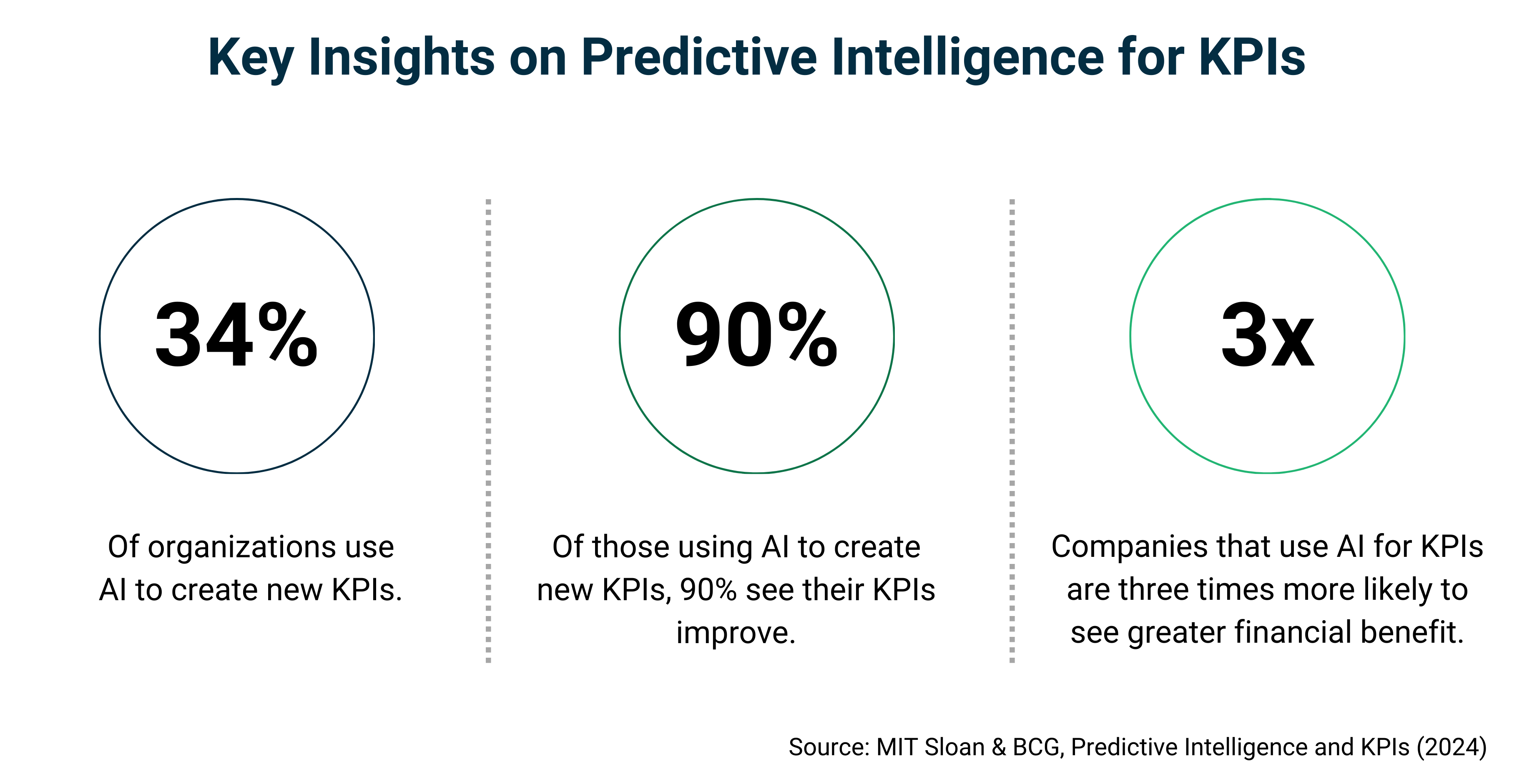
Why KPIs Are Critical for Project Management
In modern project management, Key Performance Indicators (KPIs) are more than just metrics—they are essential tools that provide clarity, enable proactive decision-making, and drive success. By focusing on actionable insights, KPIs empower leaders to navigate complexity confidently.
- Clarity and Focus - Projects often involve multiple interconnected goals and deliverables. KPIs simplify these complexities by translating high-level objectives into measurable targets, ensuring teams remain focused and aligned with broader strategies.
- Example: Monitoring resource allocation KPIs ensures every task contributes to overall goals efficiently.
- Real-Time Monitoring - KPIs provide real-time visibility, enabling leaders to address deviations before they escalate. This minimizes delays and keeps projects adaptable in dynamic environments.
- Example: A schedule variance KPI helps detect early signs of timeline slippage, prompting timely corrective actions.
- Data-Driven Decisions - KPIs eliminate guesswork by providing actionable data to guide strategic decisions, reducing inefficiencies caused by intuition-driven choices.
- Example: A profit margin KPI highlights overspending, enabling leaders to adjust budgets accordingly.
- Accountability Across Teams - KPIs promote transparency by clearly defining success metrics for all stakeholders, fostering collaboration and reducing silos.
- Example: A project milestone KPI ensures teams stay accountable for deliverables at every phase.
- Risk Mitigation - As early warning systems, KPIs flag potential risks like resource strain or schedule delays, enabling proactive risk management.
- Example: Tracking resource utilization ensures no team is overburdened, reducing the risk of burnout.
By proactively addressing risks, KPIs safeguard both project outcomes and team well-being. While they bring clarity and actionable insights to project management, their potential expands significantly when paired with predictive intelligence. This combination transforms KPIs into dynamic tools that anticipate challenges and drive strategic decisions.
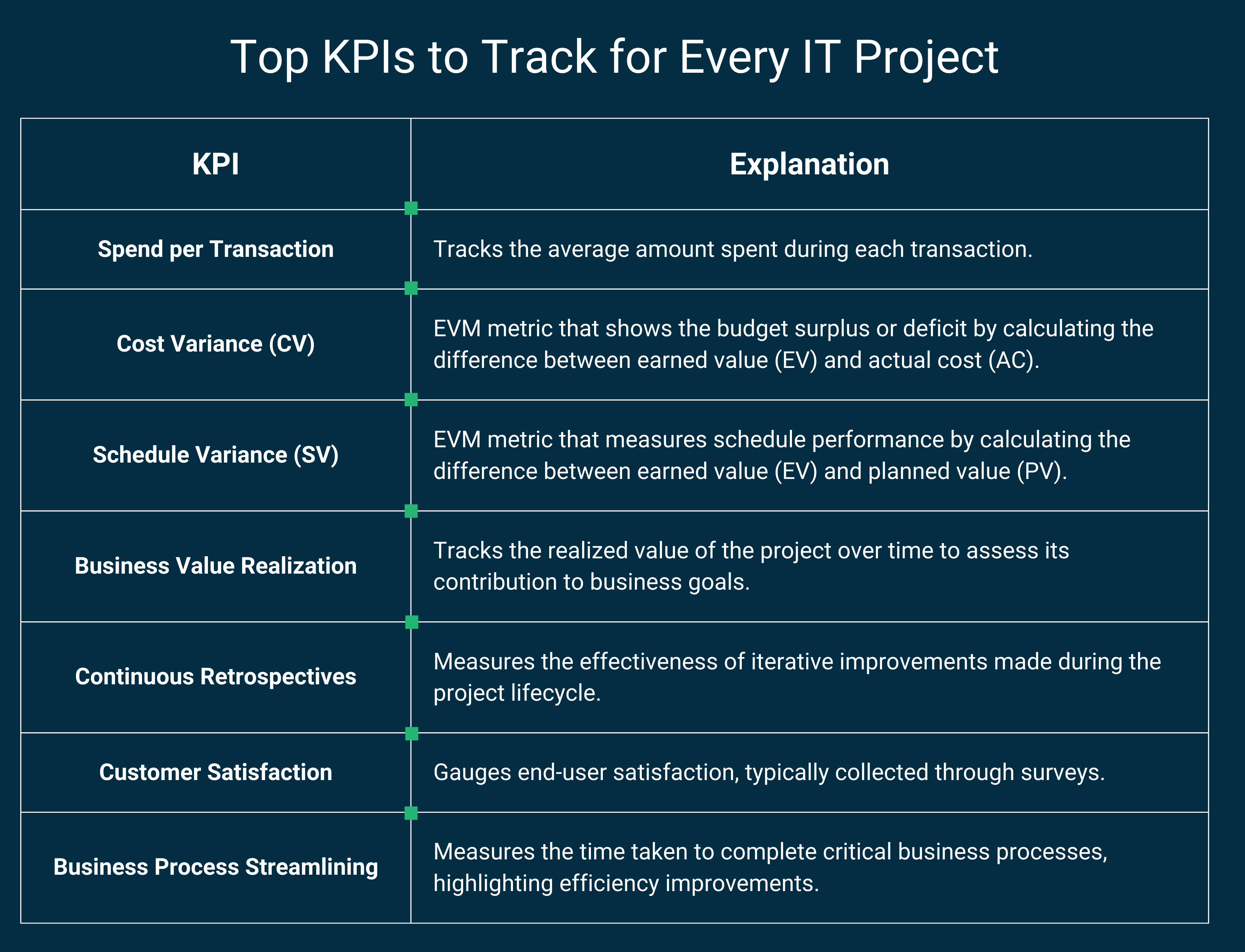
Types of KPIs Every Project Manager Should Track
To maximize their value, KPIs must be as dynamic as the projects they serve. Understanding and leveraging a mix of KPI types ensures that project managers maintain a comprehensive view of performance and stay prepared for challenges at every stage. Focus on these high-impact KPI types:
- Smart Predictive KPIs - Predictive intelligence anticipates potential outcomes, enabling proactive risk management. For example:
- Monitoring workload trends to prevent resource strain.
- Analyzing sales pipelines to forecast revenue dips.
- Smart Prescriptive KPIs - These KPIs recommend actions to optimize performance. For example - Suggesting task reprioritization based on real-time team productivity.
- Descriptive KPIs - Synthesizing historical and current data provides insights into what happened or is happening, offering situational awareness for strategic decisions.
How to Craft Effective Key Performance Indicators
With a clear understanding of the different types of KPIs, the next step is ensuring these metrics are crafted strategically to drive meaningful impact. Follow these actionable steps to create KPIs that align with your objectives and deliver measurable results:
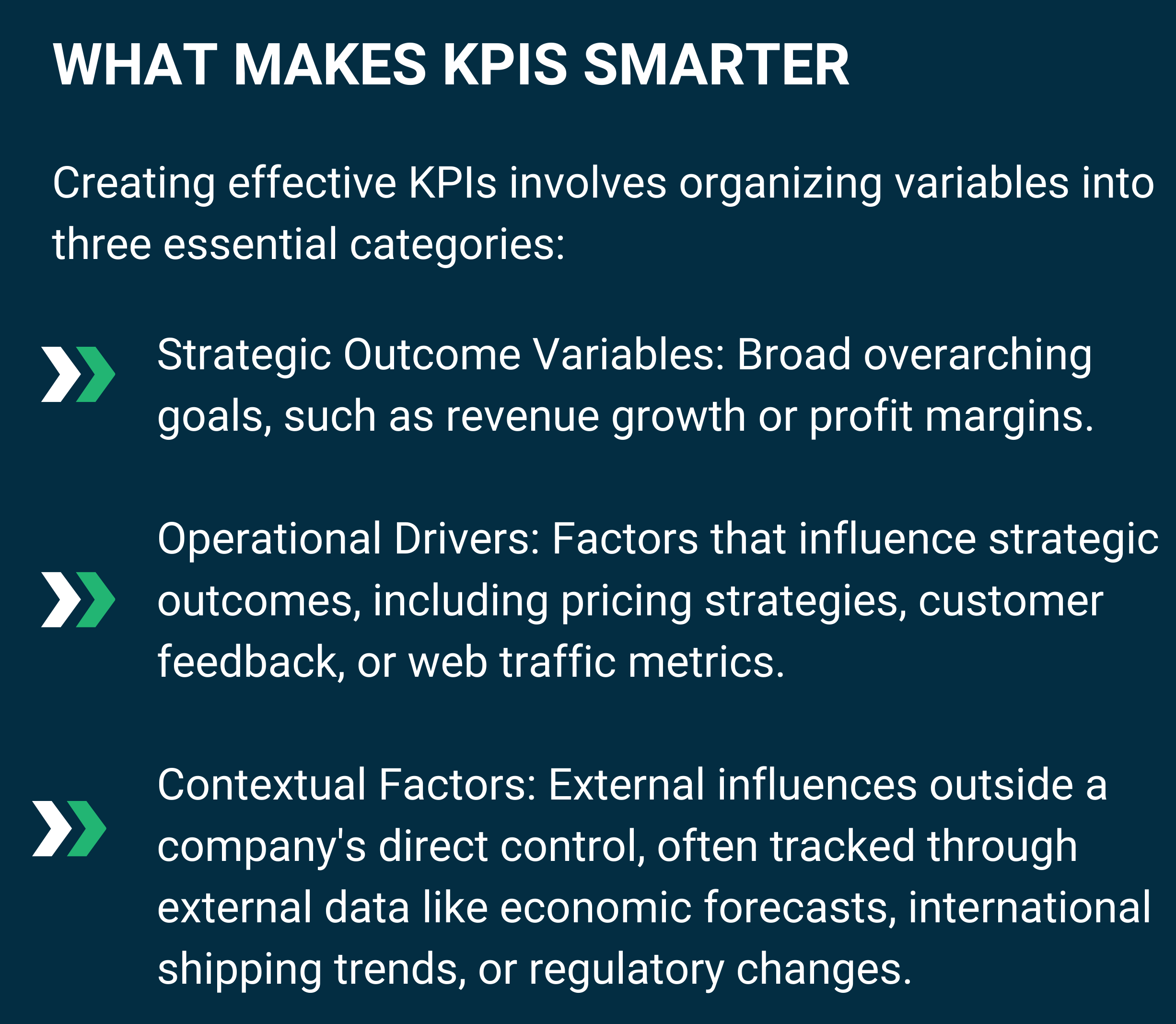
- Align KPIs with Objectives - Ensure each KPI ties directly to strategic goals. For example, monitor engagement rates and task throughput to enhance team performance.
- Make KPIs Measurable - Avoid vague targets. Use precise goals like, "Increase throughput by 15% in Q2.
- Integrate Real-Time Tracking - Leverage tools for live data, enabling dynamic responses to bottlenecks and shifting priorities.
- Balance Short- and Long-Term Goals - Include both tactical and strategic KPIs. For instance -
- Short-term - Reduce cycle times by 10%.
- Long-term - Increase ROI by 20% over six months.
- Leverage Meta-KPIs
- Introduce KPIs to evaluate the effectiveness of other KPIs. For example - Measure alignment and reliability of strategic KPI portfolios.
Even the most effective KPIs need tools to drive results. Technology enables real-time tracking, predictive foresight, and data integration, ensuring KPIs fulfill their potential.
Integrating predictive intelligence transforms KPIs into proactive tools, helping leaders anticipate challenges, adapt strategies, and deliver impactful outcomes.
Key Performance Indicator Governance - Beyond Management to Strategic Optimization
Effective governance structures are essential to ensuring KPIs deliver maximum value. KPI governance goes beyond managing isolated metrics by focusing on aligning entire KPI portfolios with organizational objectives and fostering collaboration across teams.
Key Steps to Establish KPI Governance: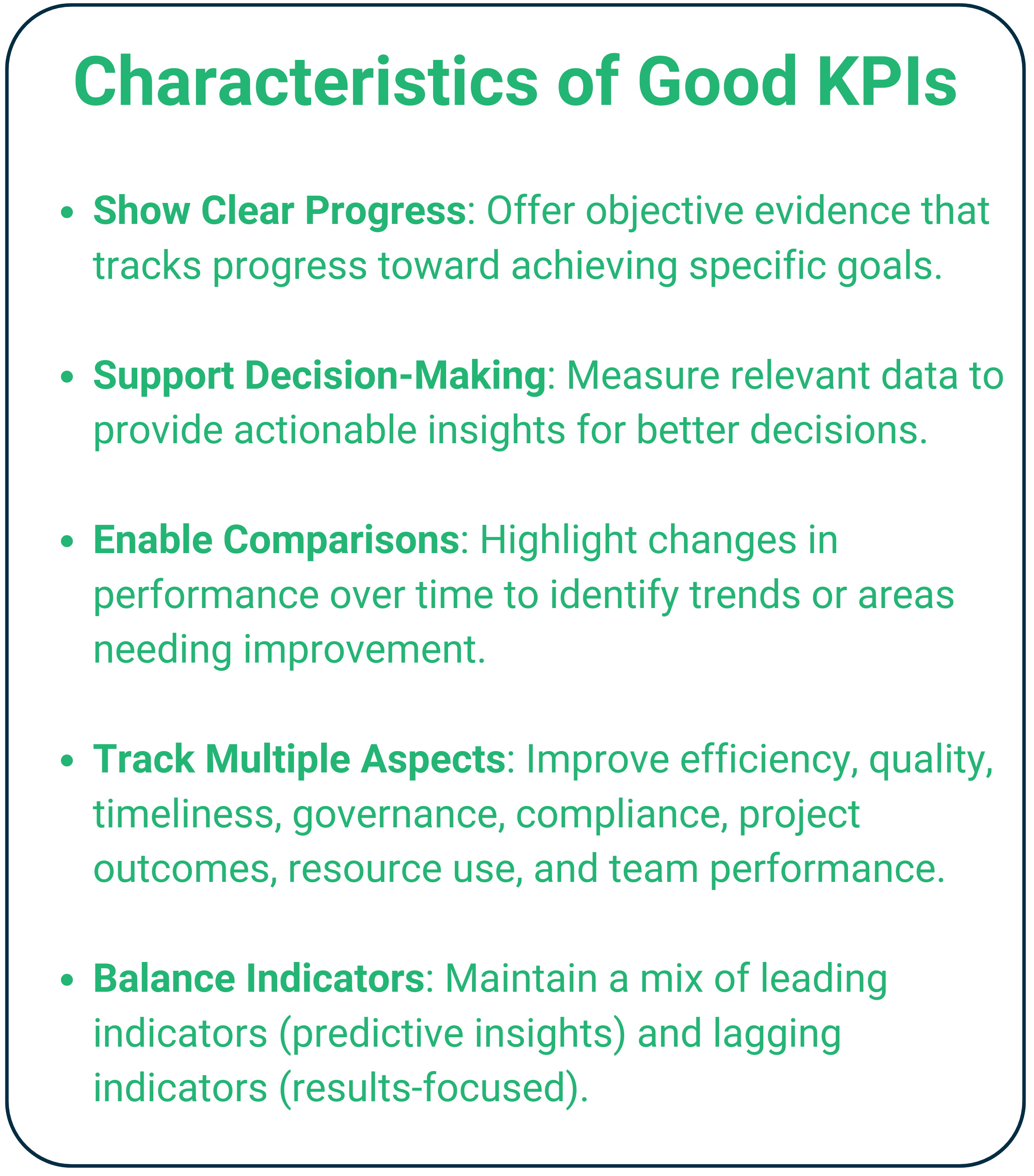
- Form a Performance Management Office (PMO) - Tasked with overseeing KPI development, a PMO ensures that metrics align with strategic goals and remain relevant as objectives evolve.
- Leverage Meta-KPIs - Use metrics to assess the reliability, utility, and alignment of existing KPIs, ensuring continuous improvement in performance tracking.
- Foster Cross-Functional Collaboration - Breaking down silos encourages shared ownership of KPIs, enhancing integration and strategic impact across the organization.
- Leverage Meta-KPIs - Assess the alignment and utility of KPIs to ensure they consistently support strategic goals and drive continuous improvement.
With governance providing a strong foundation, organizations are well-equipped to elevate their KPI strategies. The next step is integrating predictive intelligence, which enhances KPI systems by offering foresight and adaptability to manage challenges and opportunities proactively.
Predictive Intelligence - The Future of Key Performance Indicator Management
While robust KPI governance establishes a solid foundation for aligning metrics with organizational objectives, predictive intelligence elevates KPI management by transforming static measurements into dynamic, proactive tools. This enables leaders to anticipate challenges, optimize resources, and make data-driven decisions that drive success.
How Predictive Intelligence Enhances KPIs:
- Forecasting Risks Predictive tools analyze patterns in data to identify potential bottlenecks, timeline delays, or cost overruns before they occur. Example - Wayfair refined its lost-sales KPI using predictive intelligence, introducing a category retention KPI. This revealed that 50–60% of lost sales stemmed from customers purchasing similar items within the same category. The insight allowed Wayfair to optimize product recommendations, boosting both customer satisfaction and sales efficiency.
- Optimizing Resources Predictive intelligence evaluates workload distribution and resource allocation, ensuring teams remain productive without being overburdened.
- Real-time insights empower managers to dynamically redistribute workloads, maintaining operational efficiency while minimizing burnout risks.
- Aligning Projects with Strategic Goals Predictive systems go beyond immediate outputs, ensuring alignment with broader organizational strategies. For instance, Predictive analytics can recommend project scope or timeline adjustments, enabling efficient resource utilization while achieving long-term business objectives.
- Improving Team Efficiency Predictive intelligence identifies recurring issues that hinder team performance, such as workflow bottlenecks or inefficiencies. Proactive measures based on these insights eliminate roadblocks, enhancing team productivity and morale.
Predictive intelligence enhances KPI governance, turning static metrics into tools of foresight. With predictive intelligence, organizations gain a decisive edge in navigating modern project complexities and staying ahead of risks.

Transforming Projects with Key Performance Indicators and Predictive Intelligence
Key Performance Indicators (KPIs) are not just metrics—they serve as a strategic framework for project success. By aligning efforts with strategic goals, tracking progress in real-time, and keeping teams focused, KPIs help leaders simplify complexity and drive clarity. However, KPIs alone are no longer enough in today’s fast-evolving environments, with constant risks and uncertainties.
The integration of predictive intelligence marks a pivotal shift. Predictive solutions provide actionable foresight into potential bottlenecks, resource constraints, and emerging trends, complementing KPIs with a proactive approach. This synergy enables leaders to measure progress, anticipate challenges, and mitigate risks before they escalate. The result? Projects that remain on track, aligned with goals, and positioned for success.
TrueProject exemplifies this evolution. By blending customized KPI tracking with advanced predictive insights, TrueProject empowers leaders to make smarter, data-driven decisions. From optimizing resources to forecasting risks, every project decision is backed by actionable intelligence, ensuring alignment with business objectives at every step.
Explore its advanced predictive intelligence features today to learn more about how TrueProject can empower your KPI strategies.






